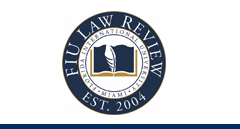Alternate Title
The “Liberty of Silence” Challenging State Legislation that Strips Municipalities of Authority to Remove Confederate Monuments
Keywords
constitutional law, first amendment, confederate monuments, civil rights
Abstract
There are roughly 700 Confederate monuments still standing in courthouse lawns, parks, and downtown squares in virtually every city, town, and village throughout the “Old South.” Most of these Confederate monuments are located in states that have enacted legislation that bans the removal of Confederate monuments. Such legislative bans are in effect in Alabama, Georgia, Kentucky Mississippi, North Carolina, South Carolina, and Tennessee. Legislation that bans removal of Confederate monuments from public spaces poses a racial justice issue for millions of residents in these states because it forces political majorities in Southern communities (many constituting majority-minority communities) to host a Confederate monument that local residents view as racist. Cities that would remove their local Confederate monument, but are precluded from doing so by state legislation banning such removal, have failed in their efforts to develop a successful litigation strategy to challenge the constitutionality of state monument removal bans. Such litigation efforts fail because lower courts interpret United States Supreme Court precedent to hold that a city does not possess any constitutional rights that it can enforce against its own state government. Unable to assert any constitutional right of its own, cities have been unable to gain standing to challenge the constitutionality of state legislation that bans the removal of a city’s Confederate monument. See, e.g., State of Alabama v. City of Birmingham, 299 So.3d. 220 (Ala, S. Ct. 2019). This article develops a constitutional theory that overcomes the main hurdle that has prevented local jurisdictions from successfully challenging state monument removal bans. The argument in this article is structured on the Constitution’s coerced speech doctrine. The hurdles to effectively challenging state monument removal bans can be surmounted when cities combine with residents to jointly assert in litigation the residents’ First Amendment right not to be coerced by state government into an unwanted association with a Confederate monument’s objectionable pro-Confederate racist messaging. Through such litigation, a city’s residents, with the assistance of their local government, are able to assert their “Liberty of Silence.”
Recommended Citation
Roger C. Hartley, The “Liberty of Silence” Challenging State Legislation that Strips Municipalities of Authority to Remove Confederate Monuments, 16 FIU L. Rev. 583 (2022), https://doi.org/10.25148/lawrev.16.3.6.





